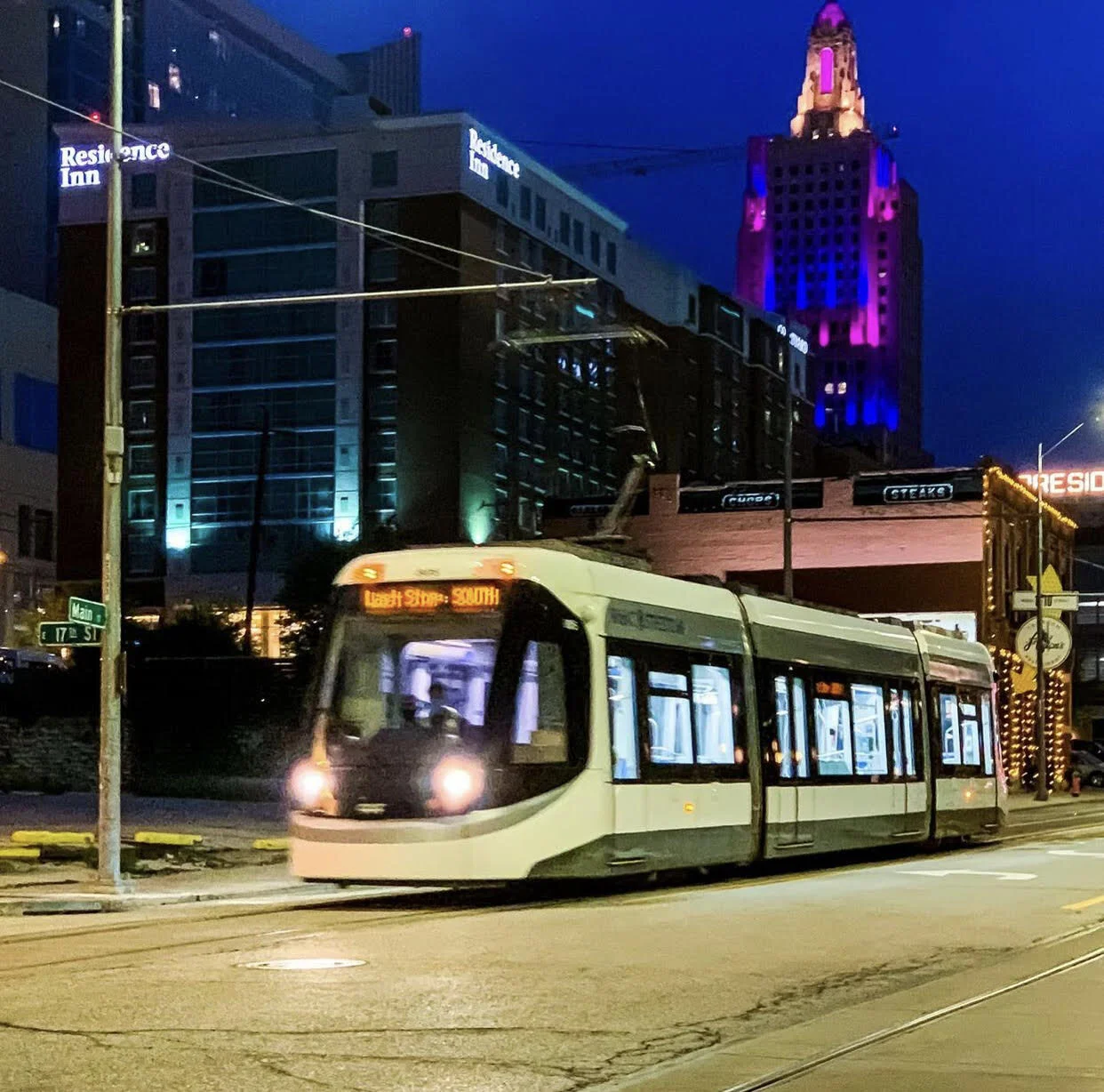The KC Streetcar turns five on May 6, and despite public skepticism before the system launched, the streetcar quickly became the highest transit ridership route in the region, carrying nearly 9 million passenger trips over the five-year period, according to Tom Gerend, executive director of the Kansas City Streetcar Authority.
Gerend, the featured speaker at this month's CCIM Kansas City virtual event, discussed the downtown KCMO public transit’s history, expansion plans, impact and future opportunities for the region.
Although the project was about laying the groundwork for something that would be transformative over a 30 to 50 year timeframe, Gerard said it was difficult to sell citizens and elected officials on the streetcar.
“There were lots of fears, lots of reasons why we were afraid to do big things we hadn’t done in a long time. We hadn’t operated rail transit since 1957,” said Gerend.
With public satisfaction growing from both riders and nonriders since the day the streetcar opened, Gerend said people are seeing the big benefits the system has brought to the region.
One of those benefits is development. Gerend said that many downtown developers have told him that the streetcar was a major positive factor in their decision making, and some even have said the streetcar was the reason they came to Kansas City to look for opportunities.
“This was very intentional about setting a framework for investment, encouraging investment to downtown,” said Gerend.
The strategy paid off. Gerend said there has been a 40 percent increase in residential density within just three blocks of the streetcar route. Additional residential projects are already in the pipeline.
“More rooftops ultimately means more retail, more economic activity, obviously city earnings tax. Things of that nature benefit the city at large, and we’ve seen the results of that financially,” he said.
The success of the initial streetcar route quickly prompted discussion about how to grow the benefits of and extend the system. The Streetcar Authority is actively working on two expansion projects scheduled to open in 2024. The projects are fully funded by federal grants, totaling $215 million.
“This is a generational opportunity. . . . We’re going to bridge the river, downtown, Crown Center, midtown, Plaza, UMKC together, connecting the densest neighborhoods and the largest job centers in our city together, and there’s real power in that,” said Gerend.
One expansion project will continue the current streetcar route south along Main Street to UMKC. Gerend said this will establish a whole new front door for UMKC on 51st and Brookside Boulevard and will elevate the university’s presence.
Utility construction on the southbound route is underway, including four miles of water and sewer work, and will take almost two years to complete. Gerend said they do not want to build over old infrastructure.
“We’re doing 50 year investments and they don’t come easy or pain free, but it will be worth it at the end of the day. We’ve seen that downtown,” he said.
Gerend said the streetcar extension to the south places a permanent stake in the ground that the streetcar will be on Main Street for decades, and that gives developers a lot of confidence as they think about opportunities.
“What an exciting time for midtown and for our city to think about a whole new future that looks a lot different, frankly, from the last 40 years and maybe more like 80 or 90 years ago,” he said.
The second expansion project will connect the north end of the current route to the riverfront area. Gerend said one of the factors impeding riverfront development has been connectivity. Currently, the riverfront, which Gerend called a downtown adjacent amenity, is separated from downtown by grade issues and railroad tracks. Most riverfront visitors have to get in a car.
“We think streetcar will add value to Port KC’s development effort so they can maximize density, maximize development opportunity. So we’re bringing value to the Port,” Gerend said.
Beyond the funded streetcar expansions, the Streetcar Authority is working hand in hand with its RideKC partners to explore other transit expansion opportunities such as a northern corridor into North Kansas City, east-west connections and routes farther south and southeast. Gerend said the expansion approach will be a multimodal approach around all modes of transit in a really intentional, integrated way.
“If we do this right, the end result will be a regional system that is intuitive, that is easy to use, that helps to solve our job access challenges more intentionally and really does serve as a long term framework for how we organize ourselves, where we’re placing those people in jobs, how we’re connecting housing to employment and affordable housing to employment in a really intentional way,” he said.

